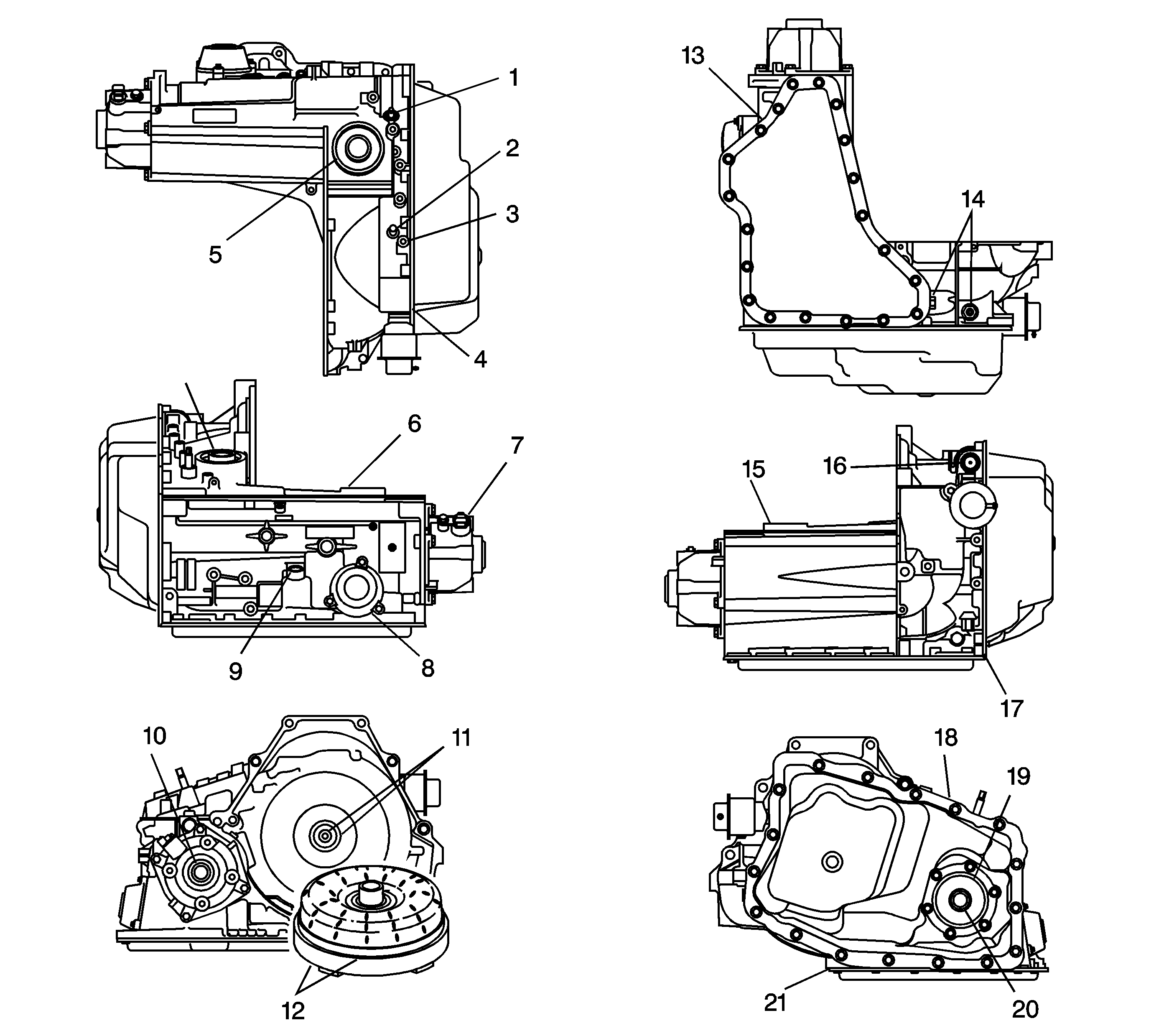Methods for Locating Leaks
You can generally locate and repair the cause of most external leaks
with the transmission in the vehicle. Use any one of the following methods
for locating leaks:
General Method
- Verify that the leak is transmission fluid.
- Thoroughly clean the suspected leak area.
- Operate the vehicle for about 15 miles or until you have
reached normal operating temperatures 88°C (190°F).
- Park the vehicle over clean paper or cardboard.
- Shut the engine off and look for fluid spots on the paper.
- Make necessary repairs.
Powder Method
- Thoroughly clean the suspected leak area with a solvent.
- Apply an aerosol type powder such as foot powder to the suspected
leak area.
- Operate the vehicle for about 15 miles or until you have
reached normal operating temperatures 88°C (190°F).
- Shut the engine off.
- Inspect the suspected leak area and trace the leak path through
the powder to find the source.
- Make necessary repairs.
Dye and Black Light Method
- Add dye to the transmission through the transmission fill cap.
Follow the manufacturer's recommendation for the amount of dye to be used.
- Find the leak with a black light.
- Make the necessary repairs.
Possible Points of Oil Leaks
| • | Oil may leak from the transmission pan or valve body cover for
the following reasons: |
| - | The attaching bolts are not torqued correctly. |
| - | The gasket is damaged or improperly installed. |
| - | The oil pan or the mounting face of the valve body cover is not
flat. |
| • | Oil may leak from the case for the following reasons: |
| - | Servo cover porosity or O-ring damage. |
| - | The multi-lip seal on the filler tube is damaged or missing. |
| - | The filler pipe bracket is mislocated. |
| - | The electrical connector O-ring is damaged. |
| - | The manual shaft seal is damaged. |
| - | The oil cooler connector fittings are loose or damaged. |
| - | The vacuum modulator O-ring is damaged. |
| - | The axle oil seals are worn or damaged. |
| - | The park lock out cup plug is loose. |
| - | The line pressure pickup pipe plug is loose. |
| - | The bottom pan or side cover gaskets are damaged. |
| • | Oil may leak from the converter end for the following reasons: |
| - | The converter seal is damaged. |
| - | The seal lip is cut (check converter hub for damage). |
| - | The bushing has been moved forward and is damaged. |
| - | A garter spring is missing from the seal. |
| - | The converter is leaking from a weld area. |
| - | A casting is porous in the case or the drive sprocket support. |
| - | The oil seal on the turbine shaft is worn or damaged. |
| • | Fluid may come out from the vent pipe under the following conditions: |
| - | If the fluid appears milky, water or coolant may be in the fluid. |
| - | The fluid level indicator registers incorrectly. |
| - | The drain back holes are plugged. |
| - | The case to the modulator gasket on the channel plate is mispositioned
or damaged. |
| - | The thermal element has been set to the incorrect height. |
Possible Leak Points


